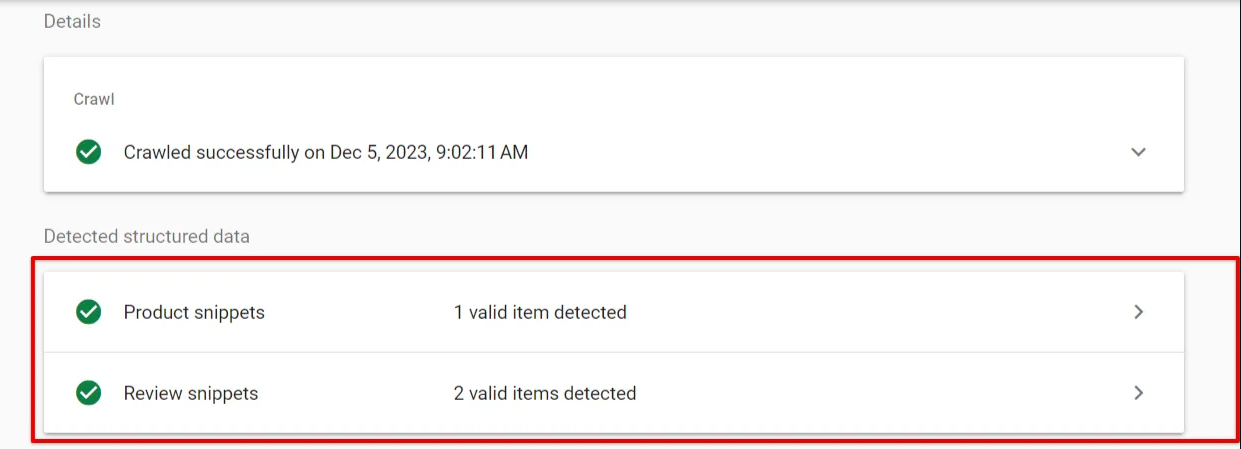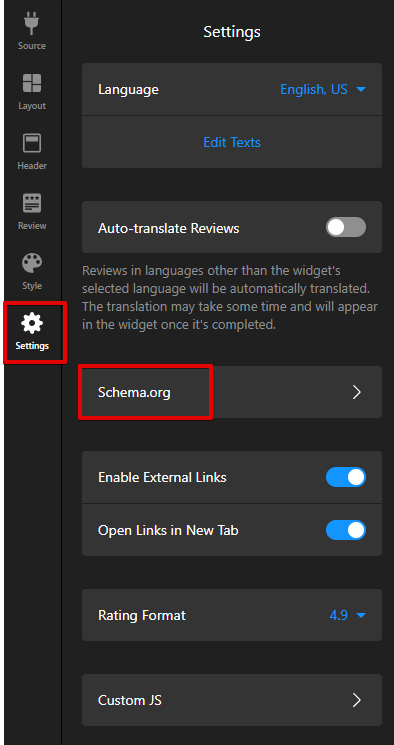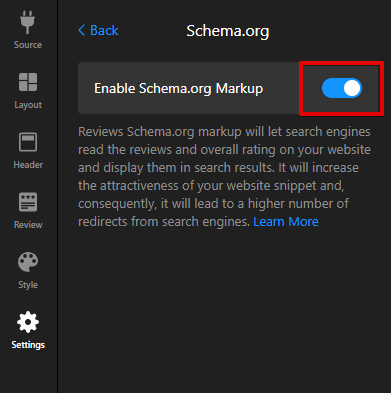Why My Schema Markup Isn’t Detected
Schema markup plays a key role in helping search engines understand your content and display rich snippets that stand out in search results.
This article will guide you through simple checks to make sure your schema markup is set up correctly and easy for search engines to read, helping your rich snippets shine.
In this article
Verify Widget Markup is Detected
The very first step is to make sure your schema markup is being detected properly. Use the Rich Results Test to check your page in real time. This tool will confirm whether your structured data is valid and eligible for rich snippets.
Here’s an example of how the markup looks for a Reviews widget:

See if Your Page is Crawlable by Robots
If your page contains a noindex or nofollow metatag, it tells search engines not to crawl or index it. That also prevents the rich snippet from showing in search results.
To check if this is the issue and fix it, follow these steps:
- 1
-
Run your page through the Rich Results Test to see if the error
Blocked by robots.txtis present:
- 2
-
Go to your website and update the
robots=noindex, nofollowmetatag torobots=index, followso search engines can crawl and index the page.
- Also, here's a detailed Google guide on robots.txt.
- 3
- After updating, save the changes and request reindexation so Google can revisit your page and update its index.
That way, search engines can crawl your page correctly and your rich snippets will display as intended.
Ensure Reviews Markup Setting is Enabled
Apps like Blog, Event Calendar, and FAQ always have schema markup enabled by default. The Reviews widget, however, gives you more flexibility — you can turn schema markup on or off whenever you need.
Here’s how to make sure schema markup is active for the Reviews widget:
- 1
- Open the editor for your Reviews widget.
- 2
-
Go to the Settings tab and open the Schema.org section:

- 3
-
Check that the Schema.org toggle is turned on:

This ensures the markup is generated from your reviews and can be used to display rich snippets in search.
Follow Platform-Specific Tips for Installation
While schema usually works fine with most website builders, some CMS platforms wrap widgets in an iframe, which stops schema markup from being detected.
This often happens with the following platforms:
| Requires Custom Installation | Doesn't Support Schema |
|---|---|
| Hostinger Godaddy Wix |
Canva Google Sites |
For platforms like GoDaddy, Wix, and Hostinger, there are workarounds available that can resolve the issue. Check out the guides below:
- GoDaddy: Installing Elfsight widget on GoDaddy avoiding iFrame
- Hostinger: Adding Elfsight widget to Hostinger website
- Wix:
- Installing Elfsight widget on Wix avoiding iFrame via Custom Element (for Wix Premium + custom domain users)
- Installing Elfsight widget on Wix avoiding iFrame via Custom Code (for users with any paid Wix plan)
Address Issues Caused by Lazy Loading Plugins
Some lazy loading plugins can interfere with schema detection and stop search engines from recognizing it. They usually affect either the section where the widget is placed or the widget code itself. A common example is the WP Rocket plugin for WordPress.
When lazy loading is applied to the widget or its container, it can delay the crawling and indexing of the widget’s content, which may result in schema markup not being detected.
data-app-elfsight-lazy attribute. That’s part of the default Elfsight code and doesn’t interfere with schema detection.
To fix this, you can either:
- Disable lazy loading for the section containing the widget.
- If your plugin supports exceptions, add these Elfsight scripts to the list:
https://apps.elfsight.com/p/platform.js https://static.elfsight.com/platform/platform.js https://elfsightcdn.com/platform.js
Resolve Conflicts Between Similar Markups
If your page has multiple similar schema markups (e.g., several Product schemas), search engines like Google may get confused about which one to use. This can lead to Google ignoring all of them or selecting one at random.
To avoid this, remove any unnecessary or duplicate markups with the same type. This way, Google will focus on the most relevant schema and display accurate snippets.
Optimize Website Structure for Markup Detection
The placement of your widget on the page also matters. If it’s far down on a page with lots of content, search engines may struggle to read it, since they focus on what’s easier to reach.
To improve the visibility, try one of the following options:
- Move the widget higher up the page: This makes it easier for search engines to detect the widget and its schema markup.
- Add the schema markup manually to the page’s HTML: This guarantees detection, even if the widget is placed lower on the page. Just note that manually added markup won’t update automatically, so review counts and ratings in snippets will stay static until you update the markup code yourself.
Related article: How to manually add Schema markup from a Reviews widget.
Schema markup is one of those little details that can make a big difference. With just a bit of attention, you’ll help search engines understand your content better and give your visitors a richer experience.
Still have questions or need a hand? Feel free to reach out to our Support Team — we’re always happy to help!

